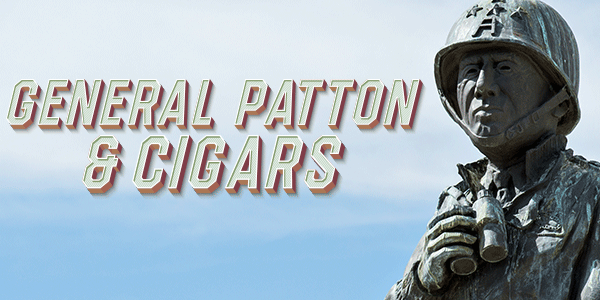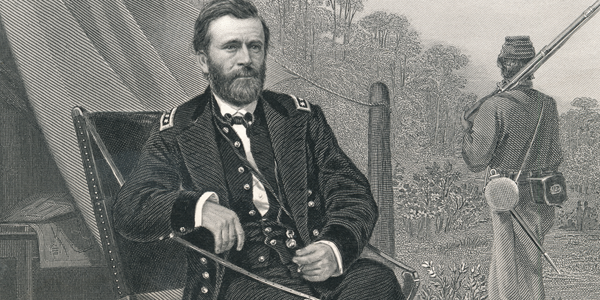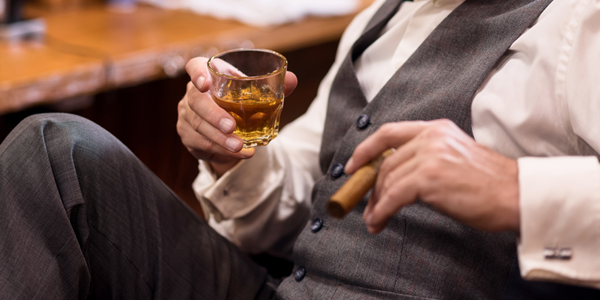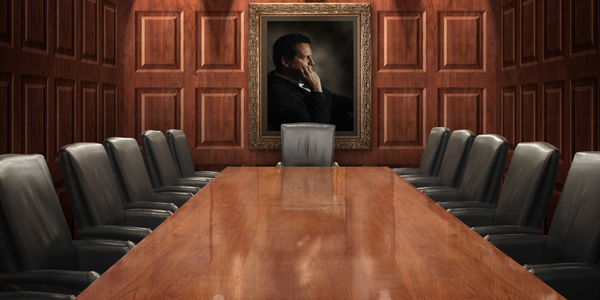General Patton & Cigars
Volumes have been filled and movies made about the exploits of US Army Major General George S. Patton. And there are very good reasons for this. Patton was a successful military tactician who was both feared and respected by the troops he led. Patton would have been a huge social media star today. He cultivated a flashy and distinctive persona all to inspire his soldiers. Patton carried a .45-caliber revolver that had an ivory grip, was engraved, and silver-plated. He wore it on his right hip. On his left, Patton carried an ivory-gripped .357 Magnum. His outfit was unique. His helmet was always polished. He wore riding pants and high cavalry boots. And he always put on what he called his “war face.” As it pertains to our focus, Patton would easily have graced the cover of any cigar magazine.
General Patton & Cigars
Patton was rarely without a Cuban cigar (or a pipe) in his mouth. He didn’t simply carry a humidor into battle. His humidor was as large as a steamer trunk that his soldiers had to transport while on a mission. It’s not clear what brand of cigar Patton favored, but photographs show him smoking various sizes.
A famous story, that no one has seen fit to ruin by trying very hard to verify it, has Patton once ordering his troops to decapitate a water buffalo that had “looked at him kinda funny.” Patton reportedly looked on and never stopped puffing on his cigar. Patton is perhaps second only to Ulysses S. Grant among US military figures and their love of cigars.
Patton, Born to Fight
George Smith Patton, Jr., born in 1885 in California, believed that in previous lives he had been a soldier. The military was all he was really interested in as a young student. He devoured classical military history, especially the exploits of Hannibal, Scipio Africanus (a Roman general who won the war against Carthage), Julius Caesar, Joan of Arc, and Napoleon Bonaparte. He also studied the career of Confederate army cavalry commander John Singleton Mosby, a family friend who led the Virginia Cavalry known as “Mosby’s Raiders” during the US Civil War.
Military Career
General Patton was a legendary master of modern warfare who commanded the U.S. Seventh Army in the Mediterranean theater of World War II and, after D-Day, the Third Army in France and Germany. Patton was famous for his temper and did not suffer fools easily. He was a graduate of the Virginia Military Institute and the US Military Academy at West Point. Patton was among the US troops that fought, in 1916, against Pancho Villa, the Mexican revolutionary. Patton served in World War I as a personal aide to General John J. Pershing. It was during this time that Patton began to study tank warfare, ultimately being put in charge of a tank brigade.
General Patton’s Controversy
Patton’s hard-charging style was not without pitfalls. He didn’t believe in “battle fatigue” and ended up involved in two high-profile incidents of striking subordinates during the campaign for Sicily in 1943. He slapped them and then ordered them back to the front lines. General Dwight D. Eisenhower, Supreme Commander of Allied Forces, reprimanded Patton and ordered him to apologize, which Patton did to the soldiers and to the doctors who witnessed the events. News of the slaps reached the US and Patton was severely criticized, both by the public and by members of Congress. Former generals, including Pershing, weighed in harshly. The public reaction was mixed. Ultimately, the secretary of war retained Patton because of the need for his "aggressive, winning leadership in the bitter battles which are to come before final victory.”
Patton’s Life After the War
At the end of hostilities in Europe, Patton asked to be sent to combat in the Pacific theater. He was kept in Europe to help with the occupation. Having survived numerous battles, Patton died in a car accident in December of 1945 while on the way to a hunting party near Heidelberg, Germany.






